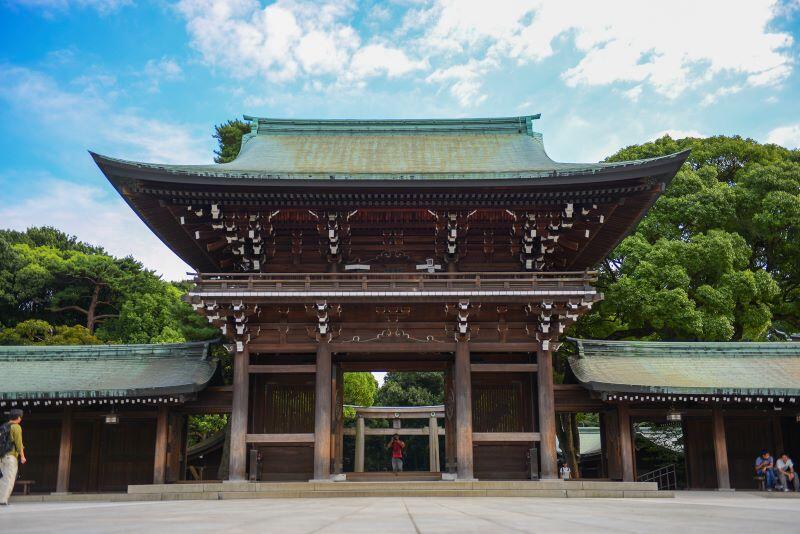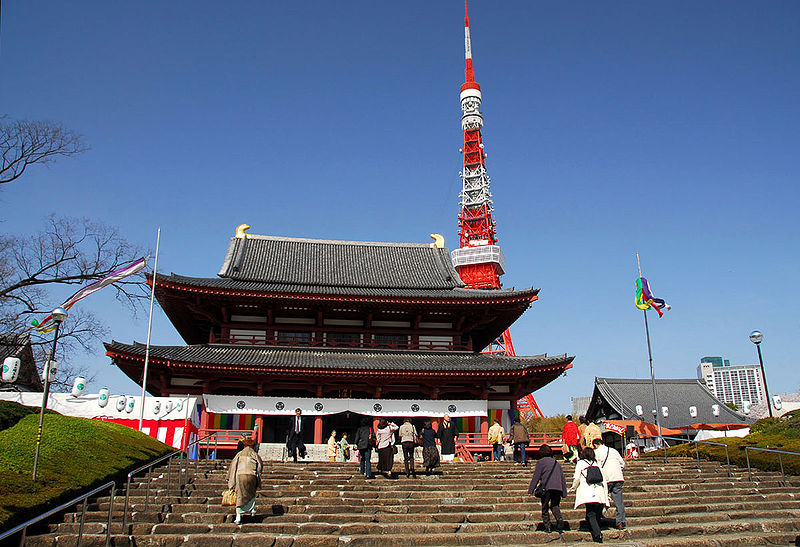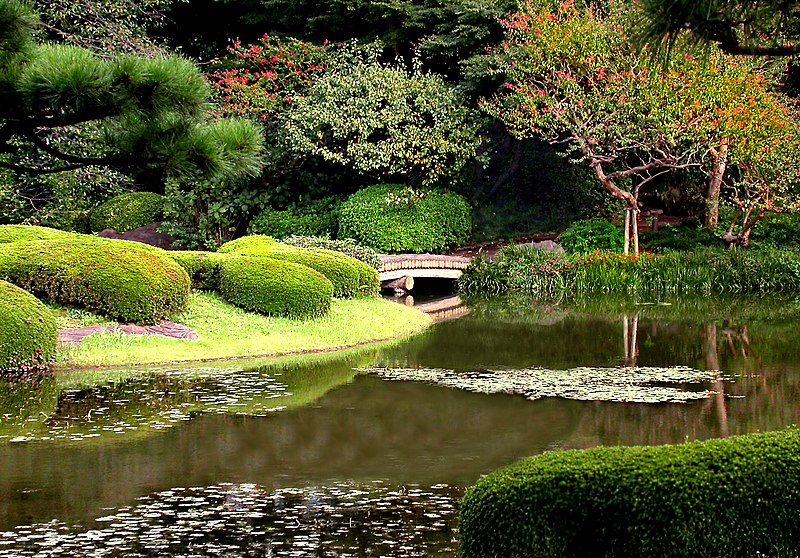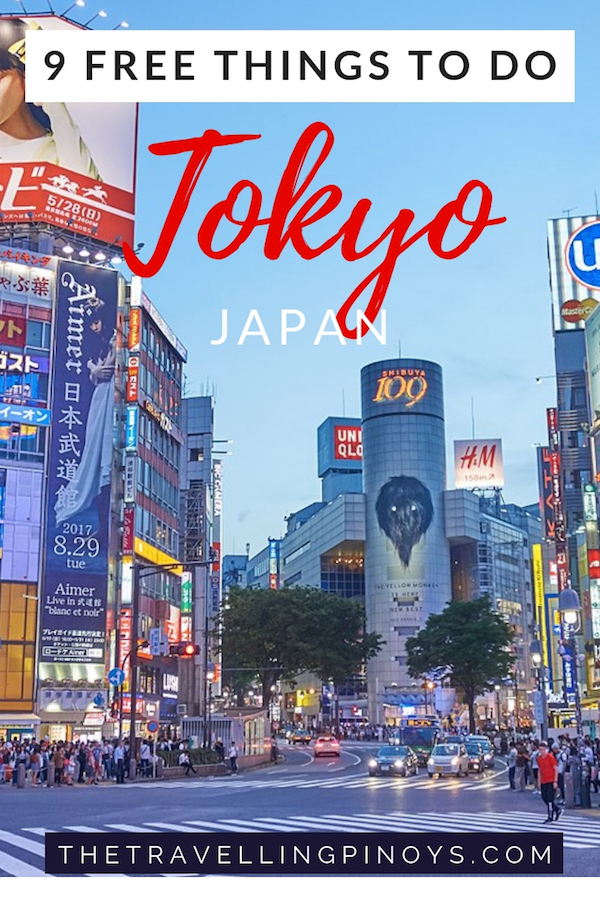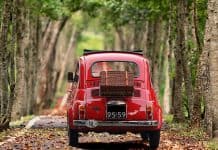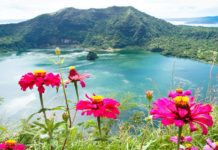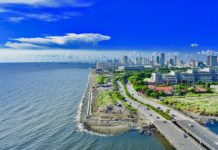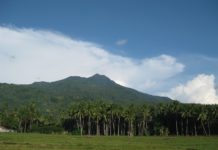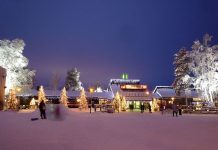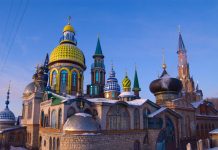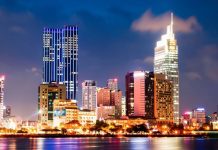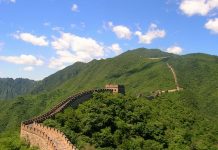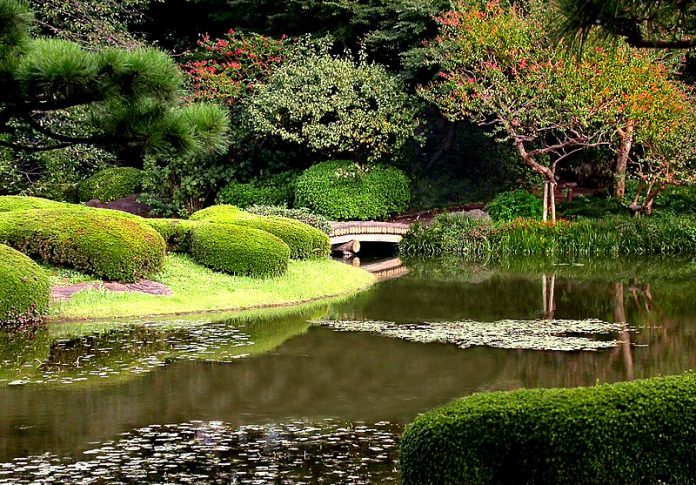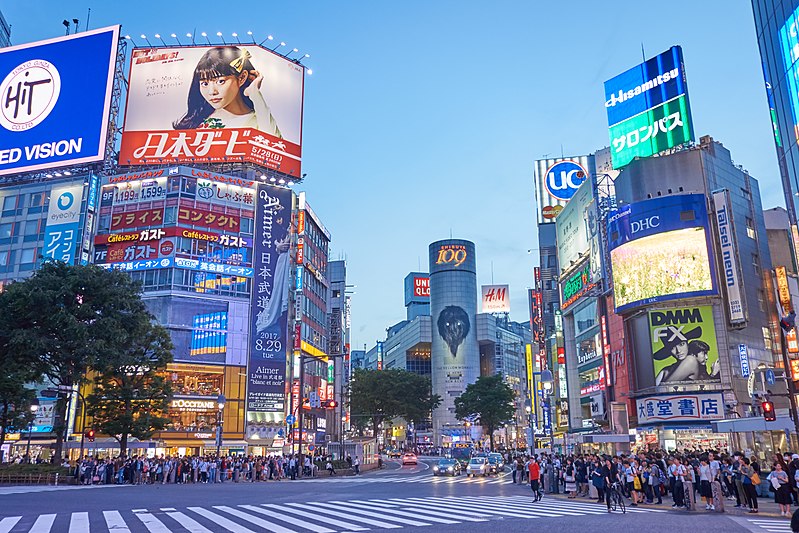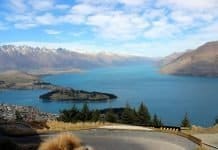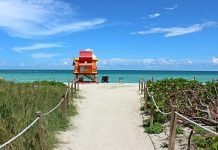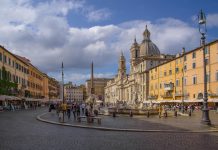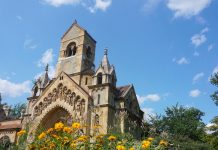Tokyo, like the rest of Japan, is known for being an expensive place. A lot of travelers are put off by this as they think Tokyo is unaffordable for budget travelers. Unknown to many, is there are lots of free things to do in Tokyo, Japan. So here are the recommended free things to do in Tokyo for free by travel bloggers. A proof that Tokyo on a budget is possible.
Free Things To Do In Tokyo, Japan
Best Places to View Hydrangeas in the Tokyo area
View this post on Instagram
In Japanese tradition, Hydrangea is the sign of the rainy season. Although hydrangea is not exclusive in Japan, it holds dear in Japanese people’s heart and the flower is adored and honored as they do for ume (plum), Sakura (cherry), and irises. In fact, Hydrangea was first cultivated in Japan.
Now, Hydrangeas are cultivated in temples, gardens, parks, and even on the roadside – and these places will be packed with visitors when the flowers are blooming, usually from the end of May to June.
Hakusan-Jinja Shrine is located in Bunkyo city, a charming, old-fashioned neighborhood known for its rich culture and beautiful flowers – the city holds five major flower festivals annually, and the Hydrangea Festival (Ajisai Matsuri) is one of them. The event starts on June 8th in 2019 and there are over 3,000 hydrangeas around Hakusan-Jinja Shrine and Hakusan Park.
Visitors come here to enjoy viewing and photo-shooting, and there are a number of street stalls selling potted hydrangeas and other festive items during the festival. Another great place is Ueno Onshi Park, flowers are grown on the sidewalk of numerous trails in the parks. In other words, hydrangeas are basically everywhere and it is should be included on your itinerary for Tokyo.
Source: Kenny of Knycx Journeying
2. Tokyo Metropolitan Building
View this post on Instagram
One of the best places to see Tokyo from above is the Tokyo Metropolitan Building. I like it because it’s completely free, there are restaurants and shops on the viewing area so you can also do something else, and you can actually see the towers (Tokyo Tower and Sky Tree) from there. I mean, if you climb one of the towers, you won’t really be able to see it, will you?
Since it is a government building, everyone must pass through security on entering – X-ray of bags, etc, and it can get quite crowded. I recommend you visit it on a clear day, just before sunset – that way, you can see the Tokyo skyline during the day, during sunset, and during the night. You can stay there for as long as you want, but around an hour (if you’re not eating) will be enough for most.
Source: Thais Saito of World Trip Diaries
3. See the Amazing Fire Ritual At Fukagawa Fudodo
There’s fire, drumming and chanting but we’re not talking about any kind of theatrical performance here, but an amazing religious ceremony that happens up to six times a day at Tokyo’s Fukagawa Fudodo temple.
Known as the Goma ritual, its aim is to release suffering and negative energies that might hold people back on their journey to enlightenment. The wooden plaques being burned contain the wishes of devotees that they hope to have granted by the ritual. This is a unique thing to do in Japan.
Exactly what’s going on might be a bit of a mystery, but it’s impossible not to be fascinated by the rhythm, noise, and flames. Saying that though it’s also very sacred and as such, no photos of the ceremony are allowed. You’re also asked to remove your shoes as wearing shoes inside a temple is one of those things that you can’t do in Japan. And sit in a respectful position for the ceremony. When it’s finished visit the room of 10,000 crystal statues – it’s quite an amazing sight.
You’ll find Fukagawa Fudodo in east Tokyo, the nearest station is Monzen-Nakacho. The first ritual takes place at 9 am (which makes it a great thing to do in Tokyo in the early morning when many other things are closed). It then happens every two hours throughout the day.
Source: Helen Foster of Destination>Differentville

Tokyo is home to the busiest intersection in the world. The intersection is popularly known as Shibuya crossing and is located in the Shibuya district of the capital, right next to the metro station with the same name.
The crossing is famous for 2 reasons. The first is naturally the enormous flow of people that take over the streets each time the lights switch to green. The second reason is Tokyo’s most famous dog, Hachiko. The dog came to Shibuya station every day to meet his master and continued to do so for 9 years after his master had died, until his own death. A bit of a sad story that was filmed in Hachiko, a dog’s tale.
The dog has a small statue near the subway exit but the most impressive part about this square is undoubtedly the intersection. It is a really good representation of the Japanese vibe and one of the must-see places in Japan. Thousands of people walking like ants in a chaotic but at the same time orderly stream while screaming billboards try to get their attention.
To get a good view on the intersection you can grab a coffee in the Starbucks that is located on the first floor right on the square.
Source: Sylvia of Wapiti Travel
5. Walk through Asakusa District
View this post on Instagram
Asakusa is one of Tokyo’s oldest and most atmospheric districts. It’s centrally located, near to the busy hubs in Ueno and the Skytree areas and it’s one of the best places to stay in Tokyo. The best way to get there is to take the boat from Hamarikyu Gardens (unfortunately this isn’t free!).
The main attraction in Asakusa for tourists and Japanese alike is the Senso-ji temple complex. Senso-ji dates back to 645 and this makes it Tokyo’s oldest temple, and walking through its fabulous gateways is a highlight. The complex consists of the main Buddhist temple and outbuildings as well as a lovely garden and a Shinto shrine. It will take a good couple of hours to look around everything here properly.
(Traveler’s Tip: You can book an insane photoshoot with Kimono here. For more info, check out this guide: the best photoshoots in Tokyo).
The area is also fantastic for food and shopping. Nakemise-dori, the street leading up to the temple, is lined with shops selling all manner of trinkets, artwork, food and more. Even if you don’t buy anything it’s fun to browse the wares.
Don’t miss walking through the covered streets running parallel to Nakamise-Dori – there are some fantastic food shops here. To get a bird’s eye view of Asakusa and Senso-ji temple, go to the Asakusa Cultural Information Centre and go up to the top floor for a fantastic free panorama over Tokyo.
Source: Emily Cole of Kids and Compass
6. Meiji Shrine

A visit to Meiji Shrine is one of the best free things to do in Tokyo. Located in Shibuya, Meiji Shrine is a shrine dedicated to the deified spirits of Emperor Meiji. Originally built in 1915, Meiji Shrine was destroyed during World War II and has since been rebuilt. Many locals, tourists, and even politicians visit Meiji Shrine as it’s one of the popular landmarks in Japan.
The Meiji Shrine area is a large forest area which is hard to find in a densely populated city like Tokyo. A walk in Meiji Shrine is very relaxing and peaceful therefore it’s a great “get away” from the busy city life of Tokyo. When visiting in the morning, you will often see many students on their field trips.
If you are lucky, you can sometimes witness a traditional Japanese wedding ceremony in Meiji Shrine also. If you visit Tokyo on New Year’s Day, you should stop by Meiji Shrine as locals come here for the year’s first prayers. Other things to see in Meiji Shrine include the Meiji Jingu Treasure House, the Inner Garden (need entrance fee) and the barrels of sake near the entrance.
Source: Serena Cao of Serena’s Lenses
7. Maison de Hermès Art Gallery in Ginza
View this post on Instagram
Ginza is one of the most glamorous neighborhoods in Tokyo with its streets lined with luxury brand flagship stores. While shopping here can easily break the bank, your Ginza experience doesn’t need to be an intimating one. If you are traveling on a budget, you may be pleasantly surprised to learn that Ginza – the preeminent upscale shopping district – even offers anything free. But free doesn’t have to mean cheap or trivial in Ginza!
Head over to the Maison Hermès Ginza. Besides the jaw-dropping Hermès scarfs and watch collections, this flagship store houses an art gallery upstairs, welcoming anyone to visit and appreciate the contemporary art exhibit. And it is completely free!
The gallery invites French and Japanese contemporary artists from all over the world to showcase their works. Not many tourists know about this hidden gem. So it never gets crowded, either. Tokyo is one of a select few cities in the world for Hermès to open such a gallery. So make sure not to miss this rare opportunity on your next visit to Tokyo.
Source: Chloe of Chloe’s Travelogue
8. Visit Zojoji Temple at the base of the Tokyo Tower

The Zojoji Temple is a beautiful Buddhist temple that is located at the base of the Tokyo Tower. The Temple was originally built in 1393 but was moved to its present site in 1598. Zojoji became the family temple to the Tokugawa family at the start of the Edo Period when the Tokugawa shogunate ruled Japan.
During that time there was over 3,000 priests and novices that resided here to study. During World War II, the cathedral, temples and the mausoleum of the Tokugawa family were burnt down during air raids. Since then, the cathedral and a few other structures have been rebuilt. Zojoji as survived many wars, earthquakes, and fires. The history that Zojoji has been through is so interesting and spans across so many different eras.
As you enter through the 21 meter high wooden gates (built in 1622) you can imagine how Zojoji has originally constructed and the grandness of it all. You can listen to the Daibonsho (Big Bell competed in 1673) being tolled twice a day. My favorite part was just strolling through the Japanese style gardens of the temple as it is so serene and welcoming.
Source: Helena of Through an Aussie’s Eyes
9. Imperial Palace outer gardens

The Imperial Palace is one of Tokyo’s top visited attractions. Home to the emperor of Japan, you can’t visit or tour the palace itself, but the outer gardens are free and open to the public year round. The lush green gardens with perfectly pruned trees and plants are a great place to relax on a hot afternoon. Just a 10-minute walk from Tokyo Station, the palace grounds cover 1.3 square miles.
You can register in advance for a free guided tour or simply roam the public areas at your own pace. The beautiful gardens are a great area of Tokyo to see cherry blossoms blooming in spring or simply escape the busy city streets for a brief moment of serenity. Although you can’t get close to it except on a few special occasions throughout the year, the Imperial Palace and the ancient Edo Castle is viewable from the outer gardens and gate and makes for a picturesque backdrop for anyone visiting Tokyo.
Source: Melissa of Parenthood and Passports
Like It? Pin It!

The crossing is famous for 2 reasons. The first is naturally the enormous flow of people that take over the streets each time the lights switch to green. The second reason is Tokyo’s most famous dog, Hachiko. The dog came to Shibuya station every day to meet his master and continued to do so for 9 years after his master had died, until his own death. A bit of a sad story that was filmed in Hachiko, a dog’s tale.
